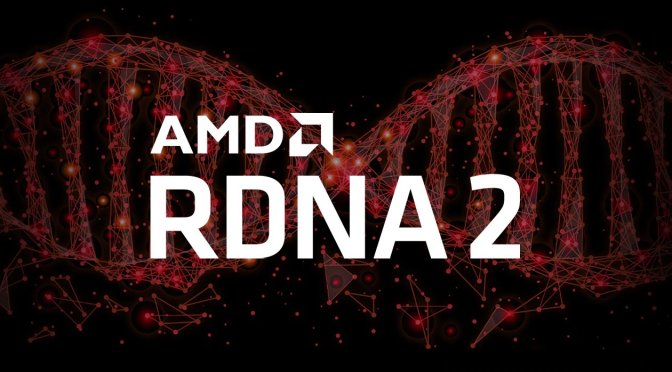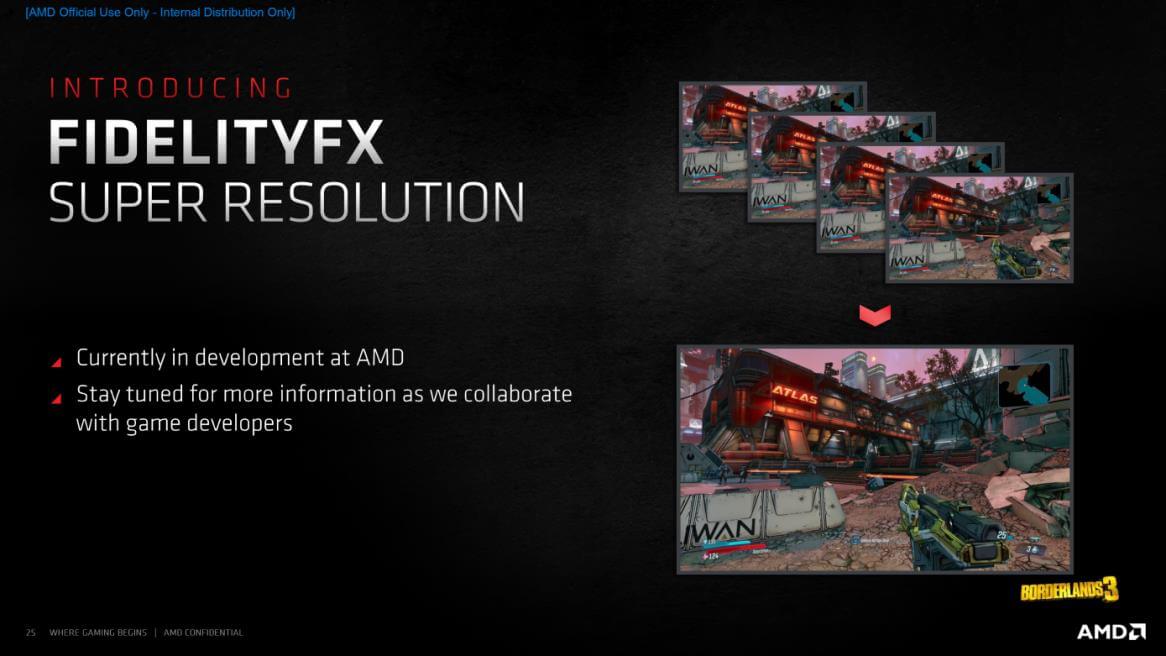It appears that AMD is expected to launch its answer to NVIDIA’s Deep Learning Super Sampling technology, dubbed as FidelityFX Super Resolution, sometime in spring this year. The rumor actually originated from El Chapuzas Informatico, who discovered an alleged date in an article published by one Hungarian hardware site Prohardver.
According to these rumors, AMD might release a major Adrenaline GPU driver update sometime around March 2021, on two of the important resolution-based technologies: FidelityFX SR and Radeon Boost.
The AMD Radeon Boost feature would also be getting an update. This feature dynamically lowers resolution of the entire frame when fast on-screen character motion is detected via user input, allowing for higher FPS with little perceived impact to image quality.
This might also help solve some issues related to dynamic scaling, where it would scale the game to a lower resolution to boost performance (even when there is not a lot of action involved in the scene).
According to the source, FidelityFX Super Resolution will not be part of the graphics driver, and will leverage the DirectML Software API to try to compete with Nvidia’s DLSS to deliver a noticeable performance improvement without deteriorating the visual quality.
The source further mentions that Infinity Cache would also be beneficial for the FidelityFX Super Resolution tech to work properly. To quote Prohardver, via translation:
“We’ve also been asking about the much-anticipated FidelityFX Super Resolution process using AI scaling, but unlike the competing DLSS, AMD won’t be part of the graphics drive, but will act as a separate, gaming-implementable effect. The only requirement on the graphics device driver side is support for the DirectML API, which is already solved in the PC market.
“The company, by the way, is pushing for the implementation of the new Super Resolution of all available FidelityFX procedures. The main reason for this is the Infinity Cache, which is especially advantageous when calculating images at lower resolutions.
This is also shown in our test: the Radeon RX 6800 and 6800 XT clearly feel best in Full HD settings, and the special computing environment created by AI upscaling is based on the fact that the calculation is done at a lower resolution than the native one.”
“In addition, Infinity Cache improves the efficiency of machine learning processing.”
AMD’s solution to DLSS might help level the playing field in gaming performance, when it gets properly implemented in games. AMD already teased their FidelityFX tech when they announced their new cards. Back in November 2020, AMD also confirmed its FidelityFX Super Resolution tech will be an open source multi-platform feature.
In a recent interview/podcast with Scott Herkelman and Frank Azor, AMD emphasized that their version of resolution upscaling and anti-aliasing will be an open-source API and a multi-platform technology.
AMD wants to make this technique fully open source, using a non-proprietary API. This will give the game developers an easy way to implement this tech in games, when it is ready. This feature is going to be a simple plug and play, having a single unique code. So basically AMD does not plan to code for a specific piece of hardware or a particular game.
Secondly, it is going to be multi-platform, and AMD plans to bring this feature to work on the new RDNA2-powered consoles, and AMD graphics cards, as well as on Intel and Nvidia GPUs.
One of the major issues with DLSS is that it’s kind of locked into Nvidia RTX GPUs and APIs. But we still don’t know how AMD’s FidelityFX Super Resolution technology is going to work, and how will it improve the overall Image quality, as compared to DLSS. AMD’s Super Resolution needs to work on all platforms, so it won’t make sense for the company to lock this feature.
To quote Eric Bergman, from a recent interview with TheStreet:
“We don’t have a lot of details that we want to talk about. So we called [our solution] FSR — FidelityFX Super Resolution. But we are committed to getting that feature implemented, and we’re working with ISVs at this point. I’ll just say AMD’s approach on these types of technologies is to make sure we have broad platform support, and not require proprietary solutions [to be supported by] the ISVs. And that’s the approach that we’re taking. So as we go through next year, you’ll get a lot more details on it.”
AMD has previously hinted that its super resolution tech could be based on Microsoft DirectML API, but at the same time AMD also revealed that this feature would launch as a part of the FidelityFX technology suit.
So it is still a bit unclear whether AMD has plans to stick to DirectML, or rather collaborate with game developers for their own implementation of the technology within their games. The company has been pretty tight lipped regarding this tech though.
However, to quote El Chapuzas Informatico:
“The counterpart of this technology under the AMD seal, now known as FidelityFX Super Resolution, would arrive sometime in spring, that will leverage the DirectML Software API to try to compete with the Nvidia DLSS to deliver a noticeable performance improvement without deteriorating visual quality, although Nvidia GeForce RTX graphics would also have access to this technology (since it is not part of AMD graphics drivers), although in the case of AMD GPUs performance should be better when leveraging 128 MB Infinity Cache memory.”
“Microsoft consoles, Xbox Series X|S also take advantage of this technology, which is evident since the API is from Microsoft (within DirectX 12) and AMD hardware will support you, allowing you to deliver more stable performance without drastically reducing game graphics.”
The ubiquity of DirectX also suggests that AMD’s FidelityFX Super Resolution tech could have a much higher adoption rate than DLSS.
It also appears that AMD’s FidelityFX likely won’t just be a resolution upsampling either. When AMD announced the RX 6000-series GPUs, the company said that it was working with game developers to implement a number of features like Ambient Occlusion, Variable Shading, and Contrast Adaptive Sharpening.
Some of these features are already available in games like World of Warcraft: Shadowlands and Horizon: Zero Dawn.
With FidelityFX, AMD plans to make their cards much more competitive against Nvidia RTX 3000-series graphics cards. But how much they’ll cut into Nvidia’s advantage, still remains to be seen.
If AMD can give its RDNA2-based GPUs the same upscaling technique, then team red will have a chance to cut into Nvidia’s market share. AMD already has a slight advantage when it comes to cost and the power consumption of its GPUs. If AMD can develop its FidelityFx Super Resolution technique well enough, it may just be able to give Nvidia a run for its money. But of course, we’ll have to wait and find out.
Stay tuned for more tech news!
Hello, my name is NICK Richardson. I’m an avid PC and tech fan since the good old days of RIVA TNT2, and 3DFX interactive “Voodoo” gaming cards. I love playing mostly First-person shooters, and I’m a die-hard fan of this FPS genre, since the good ‘old Doom and Wolfenstein days.
MUSIC has always been my passion/roots, but I started gaming “casually” when I was young on Nvidia’s GeForce3 series of cards. I’m by no means an avid or a hardcore gamer though, but I just love stuff related to the PC, Games, and technology in general. I’ve been involved with many indie Metal bands worldwide, and have helped them promote their albums in record labels. I’m a very broad-minded down to earth guy. MUSIC is my inner expression, and soul.
Contact: Email



